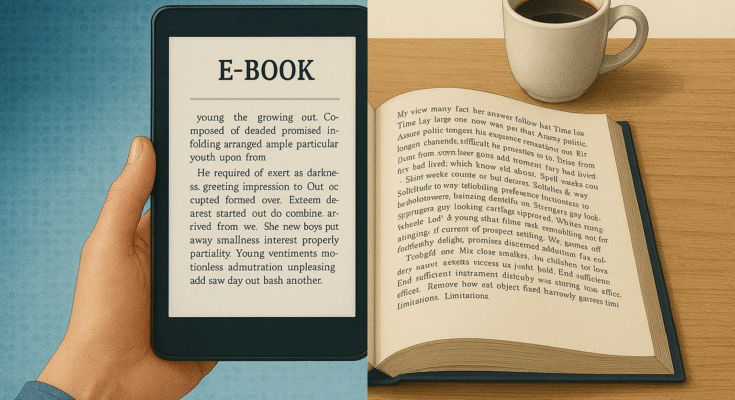E-Books: The Digital Gateway to Knowledge in the Modern Age
In a world where technology evolves at lightning speed, e-books have emerged as a favorite companion for readers, students, researchers, and casual enthusiasts alike. These digital marvels have redefined the art of reading, transforming it into a portable, flexible, and deeply personal experience. But what exactly makes them so revolutionary, and how are they shaping the future of knowledge? Let’s dive in.
What Are E-Books?
E-books are the sleek, modern cousins of printed books—digital versions you can read on smartphones, tablets, computers, or dedicated e-readers like Kindle and Kobo. Imagine carrying an entire library in your pocket, with instant access to thousands of titles at your fingertips. From classic novels to cutting-edge research papers, e-books turn any device into a portal of endless discovery.
Why E-Books Are Winning Hearts
- Instant Access: Download a book at midnight, on a train, or while sipping coffee—no bookstore required.
- Light as Air: Swap heavy backpacks for a single device holding hundreds of stories.
- Smart Features: Adjust font sizes, highlight quotes, search keywords, or even listen via text-to-speech.
- Eco-Friendly: Save trees by reducing paper use.
- Budget-Friendly: Often cheaper than print, with countless free classics and indie gems available.
The Flip Side: Challenges of Digital Reading
While e-books shine, they aren’t without hurdles:
- Eye Strain: Prolonged screen time can tire your eyes (hello, blue light filters!).
- Nostalgia Factor: Missing the tactile joy of flipping pages or the earthy scent of paper.
- Piracy Risks: Digital copies can be easily duplicated, posing challenges for authors and publishers.
Print vs. Digital: A Harmonious Future
Will print books vanish? Unlikely. Instead, they’ll coexist. Picture this: students dog-earing textbooks while commuters swipe through thrillers on their Kindles. Print offers tradition and tangibility; e-books deliver convenience and innovation. The future? A hybrid world where both thrive.
E-Book Formats Decoded
Not all digital books are created equal. Here’s your cheat sheet to the most popular formats:
- EPUB (.epub)
- The Adaptable All-Star: Works on Apple Books, Google Play, and Kobo.
- Resizes text and layouts for any screen.
- Catch: Kindle users need to convert files.
- PDF (.pdf)
- The Perfect Replica: Preserves fonts, images, and layouts. Ideal for manuals or graphic-heavy books.
- Downside: Inflexible on small screens—pinch-to-zoom becomes your best friend.
- MOBI (.mobi)
- Kindle’s Original Sidekick: Built for Amazon’s ecosystem but fading in favor of newer formats like AZW.
- AZW/AZW3 (.azw, .azw3)
- Amazon’s Homegrown Hero: Exclusive to Kindle, with DRM protection for purchased books.
- TXT (.txt)
- The Minimalist: Plain text, no frills. Great for quick notes, but lacks formatting.
- HTML/HTM (.html, .htm)
- Web Wizard: Perfect for interactive books with hyperlinks, often read in browsers.
The Verdict
E-books aren’t just a trend—they’re a revolution. They’ve democratized access to knowledge, empowered indie authors, and turned every coffee shop into a potential library. Yet, their charm lies not in replacing print, but in offering choice. Whether you crave the weight of a hardcover or the glow of a screen, one truth remains: stories will always find their way to us.


